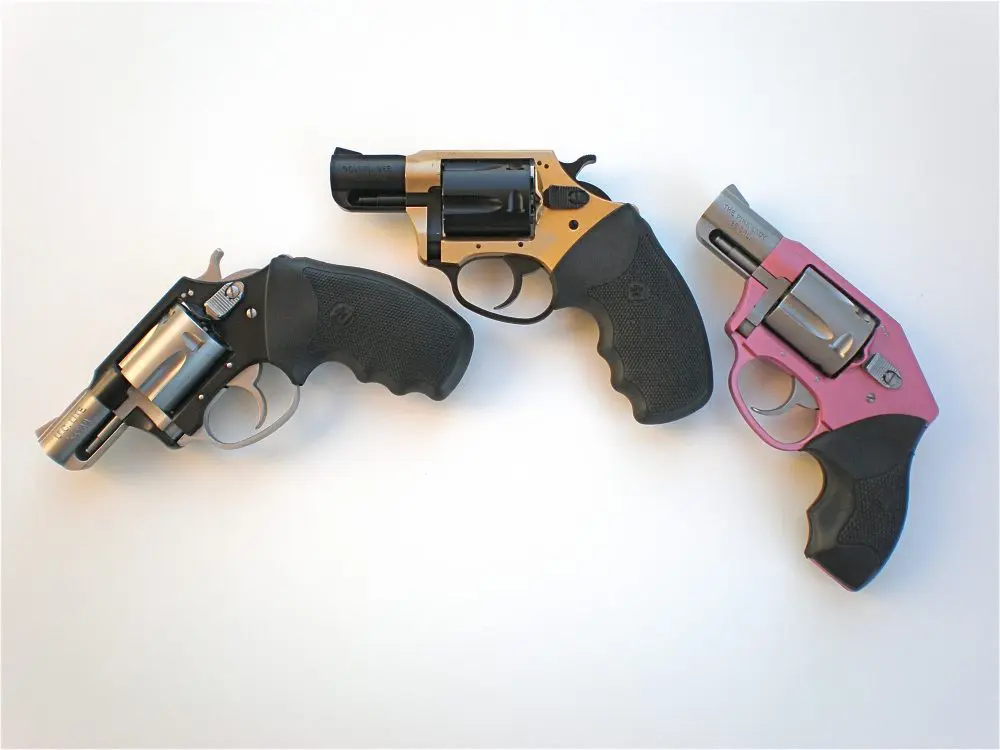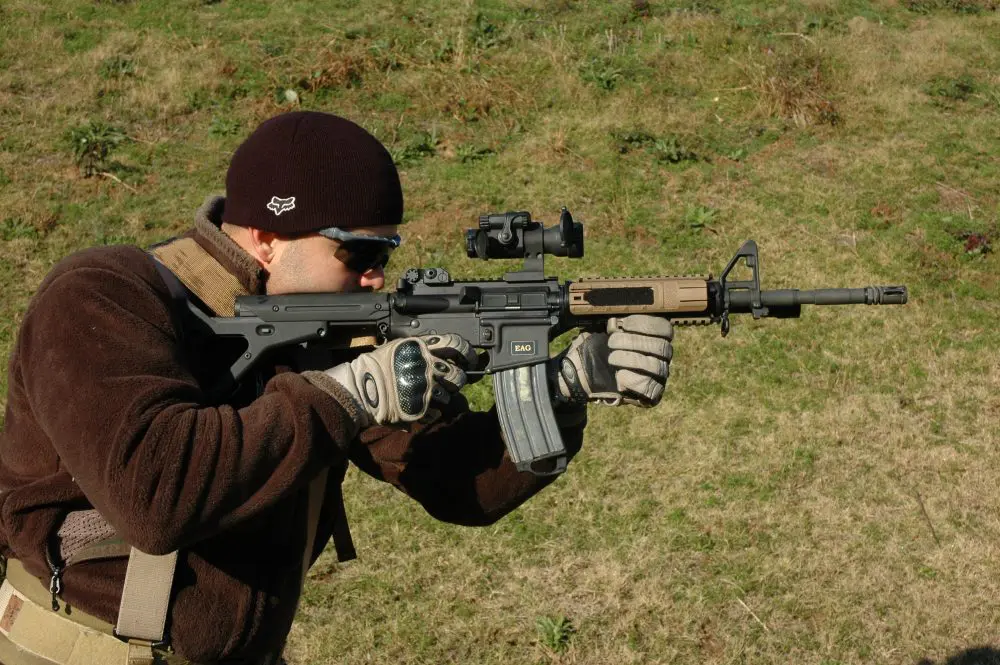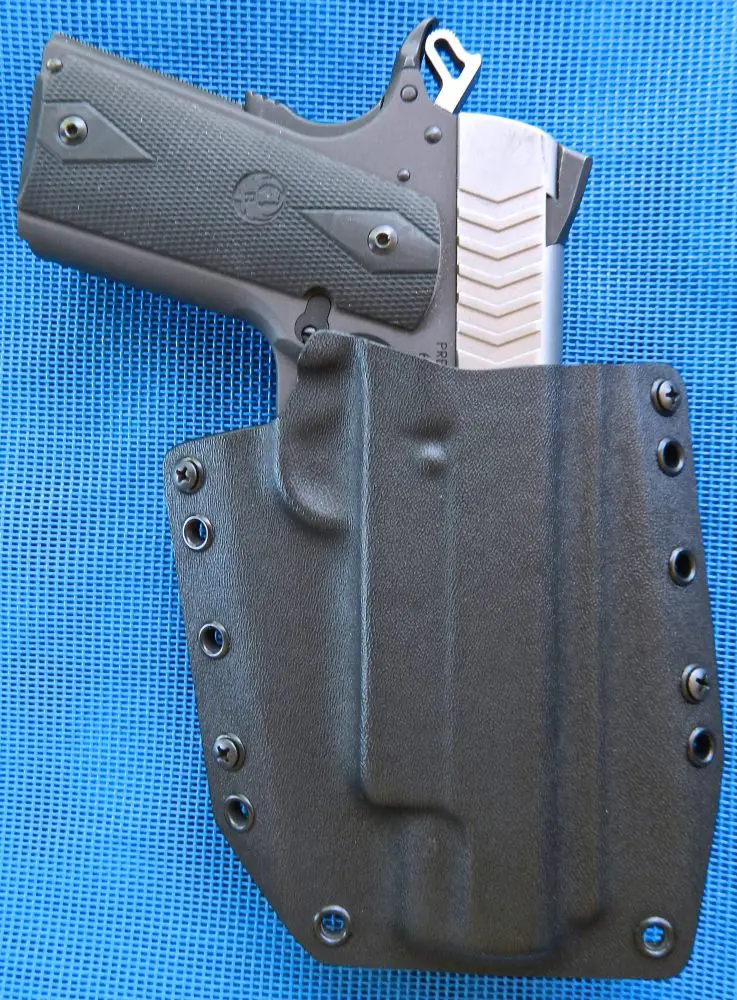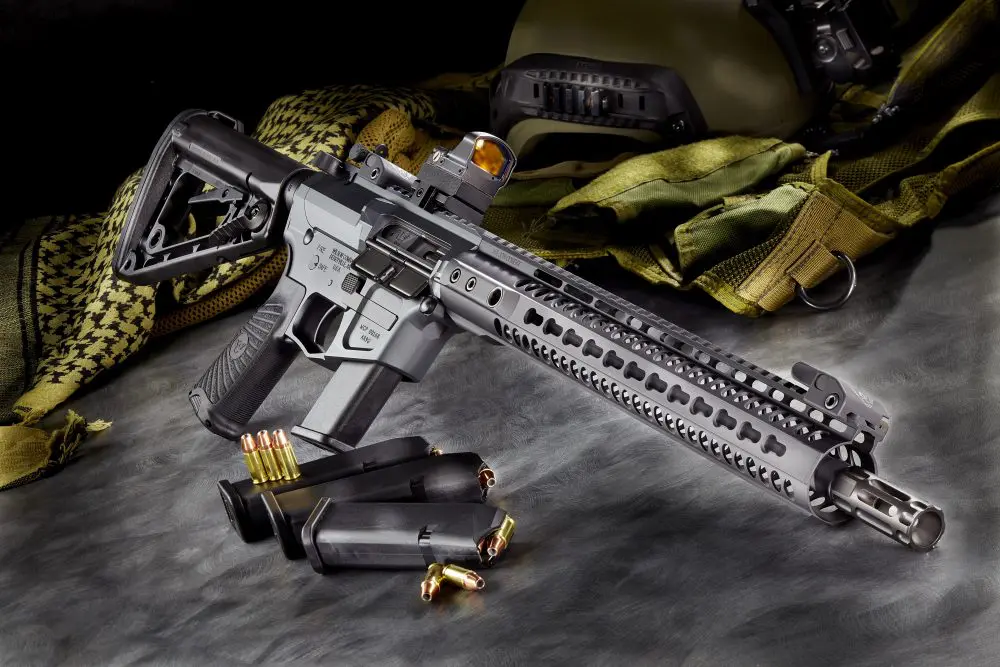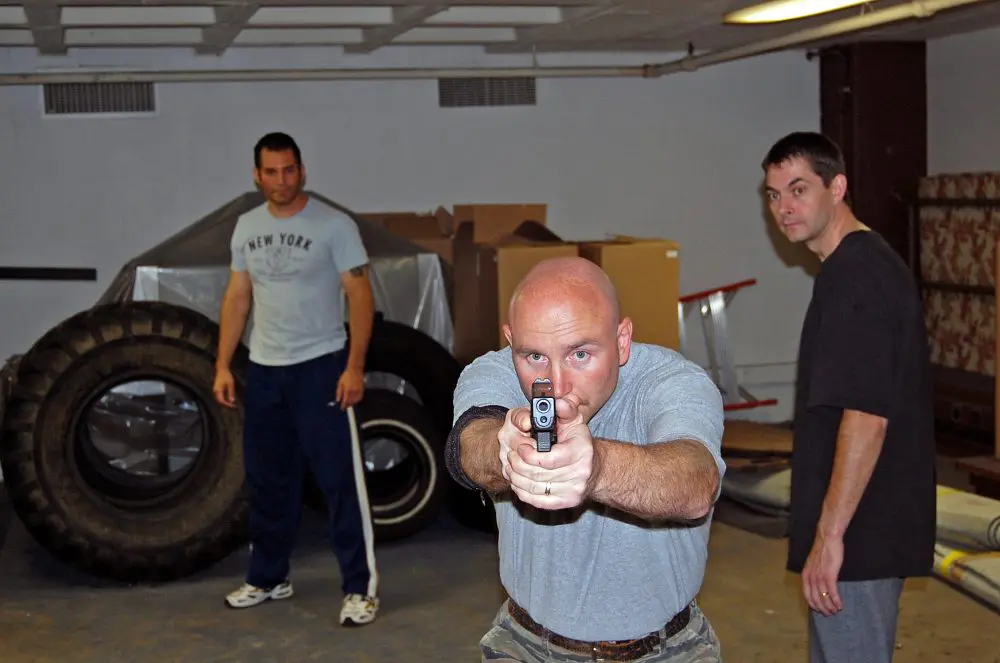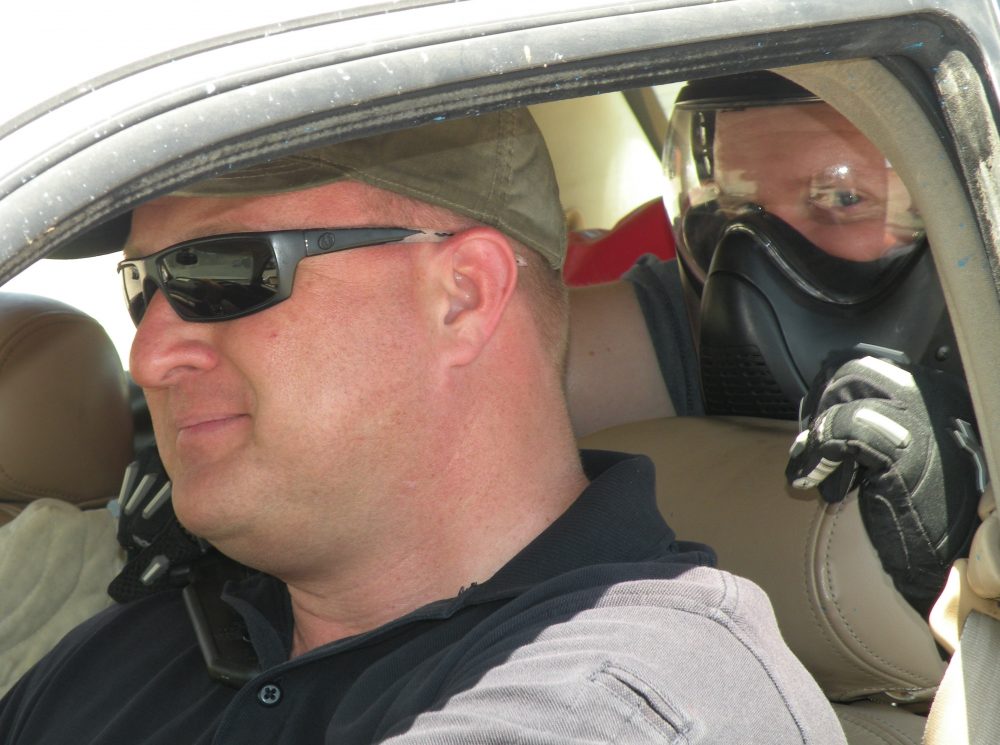
Sometimes in life, things get a little spooky.
I left the house early to attend a new class by Firearms Training Associates (FTA)—Active Shooter II, Counter Terrorism Response—and by the time I got home early that evening, every TV station was filled with news of a car and stabbing attack that had just occurred in London.
This happened on the heels of the bombing at a concert in Manchester, England just a few days before, and the class I just attended had even featured video of a similar attack involving a van running into (and over) people at a bus stop in England, after which the van’s passengers exited and attacked the injured and bystanders with meat cleavers.
It was almost too prescient to be real, but the point was made that chaos and mayhem can be visited upon us at virtually any moment in time. And then what are we going to do? Seriously, what are we going to do?
Table of Contents
START TRAINING NOW
That was the question and the whole point of the class: to test the students’ reactions to unforeseen emergencies in various scenarios. As usual, the FTA folks came up with real-world presentations that did just that.
While open to the “qualified” public, the students were a diverse mix of private citizens, active and retired law enforcement and firefighters, military, ex-military contractors, and several fellows from a foreign Secret Service.
Not many instructors can share a podium with FTA’s owner, Bill Murphy, when it comes to experience, wit, and a knack for conveying information and making a point.
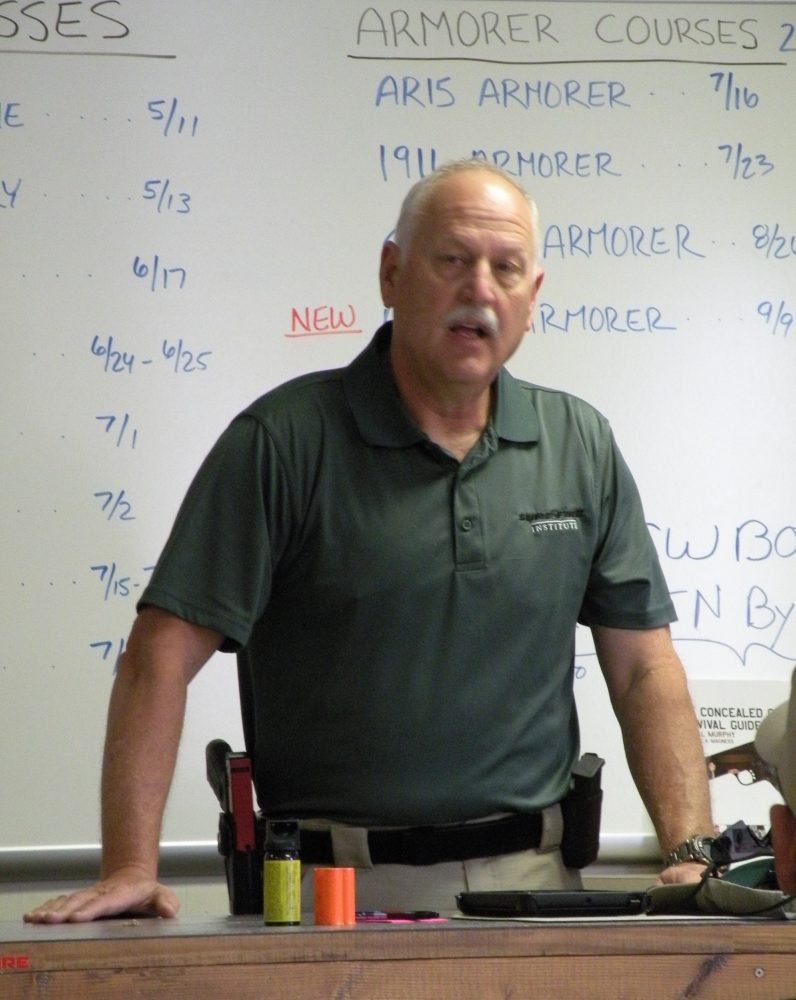
George took us through the importance of mindset, preparedness, and the need for a pre-established plan of action so we can respond as needed, when needed. He made it clear that situational awareness is a never-ending requirement, and how it is incumbent upon us all to stay alert and aware of potential problems and how to avoid or minimize them.
His discussions of Environmental Conditions (surroundings) and evaluating Pre-Event Indicators (things that could possibly go wrong) helped us all understand that preparation is not paranoia, no matter what many people say.
Government, in the form of police, firefighters, or other first responders, will probably not be there to help, so it is important that we all have a plan of action in mind that we can implement if needed.
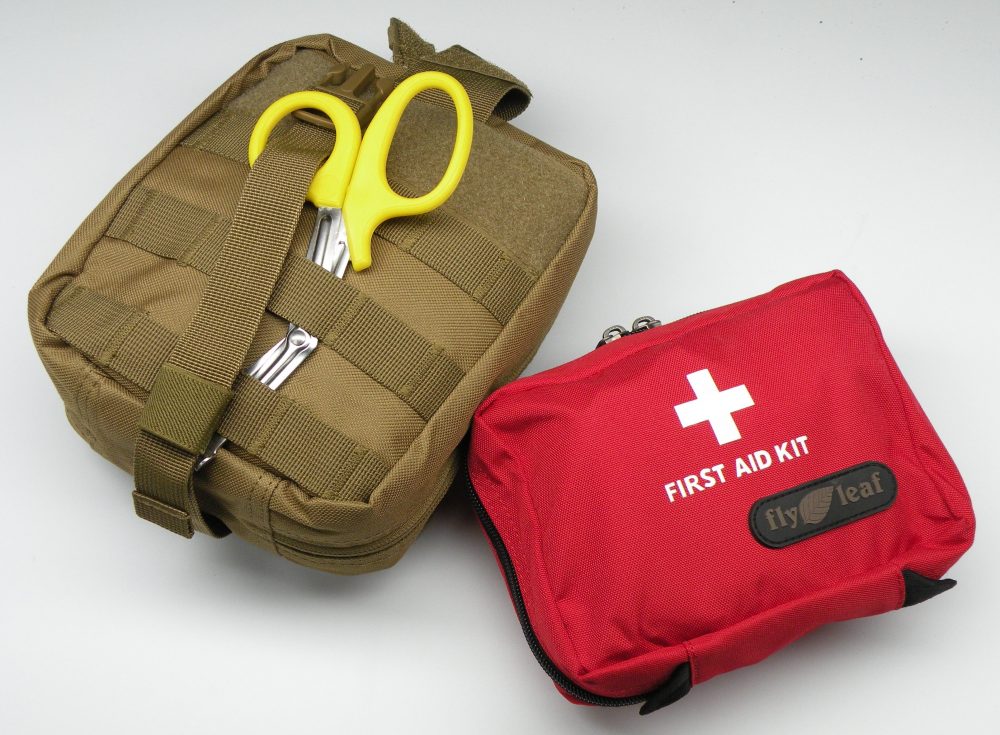
- We must look for the obvious, and not ignore it when detected.
- Try to change our routine periodically—a different spot for meals, a different route home, anything that will make us less than predictable if someone is watching for some reason.
- At an event or in a crowd, avoid first responders and their stations/headquarters, as these will be targeted first.
- Have personal gear that is useful and reliable: a good flashlight, a sturdy and sharp knife, rugged glasses (both sunglasses and vision correction), and dependable communications in the form of a cell phone that doesn’t lose its charge in a couple of hours.
- If traveling, or in a vehicle, always keep a simple but complete first-aid kit, to include any needed medications. Carry at least one bottle of water and some non-perishable food items, plus Wet Wipes, which can be used for any number of things, up to and including sensitive personal hygiene.
Bill showed us some neat protective mesh masks from Technon that protect the skin and filter smoke and particulates. These masks are a must-have for travelers. Bill also offers two different level trauma/first aid kits through his FTA store. These kits can handle most minor problems, and contain gunshot trauma supplies. They come in their own compact kit bags.
Before lunch (provided by FTA), Bill made it clear that each and every person there was now a Safety Officer, and once on the range or in the SIMS building or Shoot House, they should stop the proceedings at any time if they saw something wrong or felt that something wasn’t safe.
This is a procedure enacted by any well-run organization, and it always helps my confidence in my personal safety and that of others whenever I attend a class or event at the FTA facility.
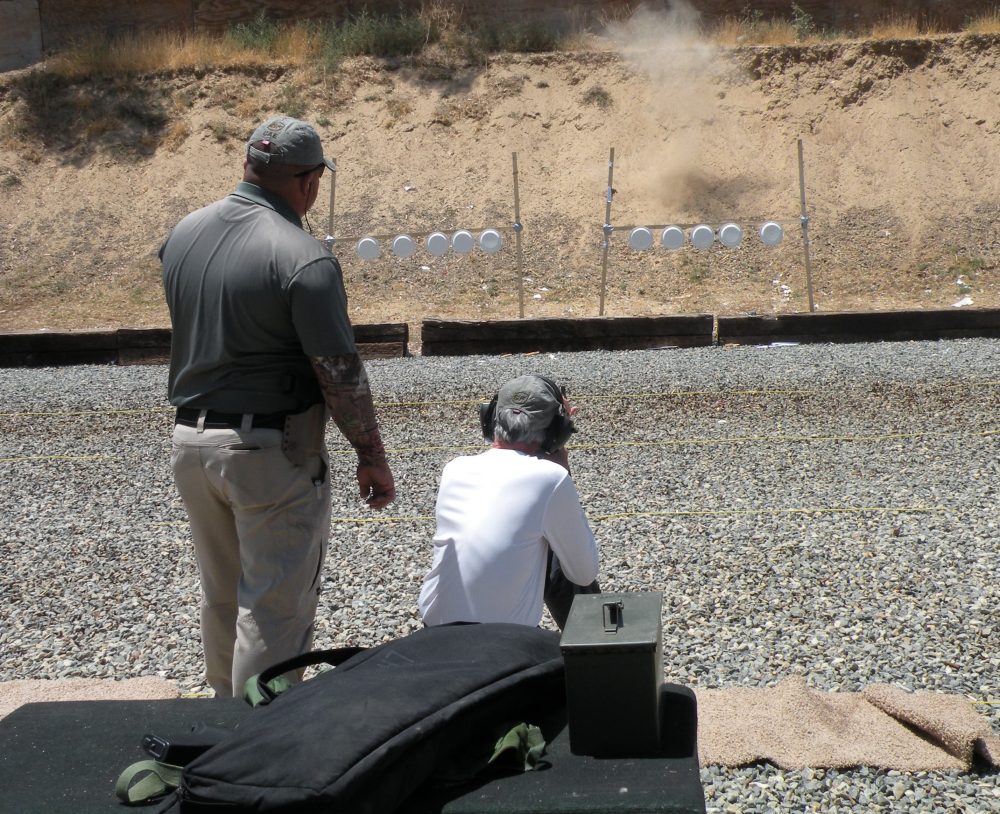
SCENARIOS
Retrieved Weapon
During a public event of some kind, we had an opportunity to retrieve a discarded weapon and put it to use. It may be a weapon with which we had no experience, and FTA makes an effort to use firearms from around the world as opposed to more familiar U.S. standards.
One of the most likely pickups is an AK-47, and that’s what we used in the class. Common in most of the rest of the world, AKs are not often seen in Kalifornia, and some students took a moment to find and identify the controls on the gun.
Though not done during this class, it is common for FTA staff to up the ante by sabotaging the firearm in some way, meaning students have to deal with an unfamiliar firearm that has some sort of unidentified problem.
Once the student got the AK loaded and charged, they were to take a kneeling position and engage a row of 10-inch plates with two rounds to each plate.
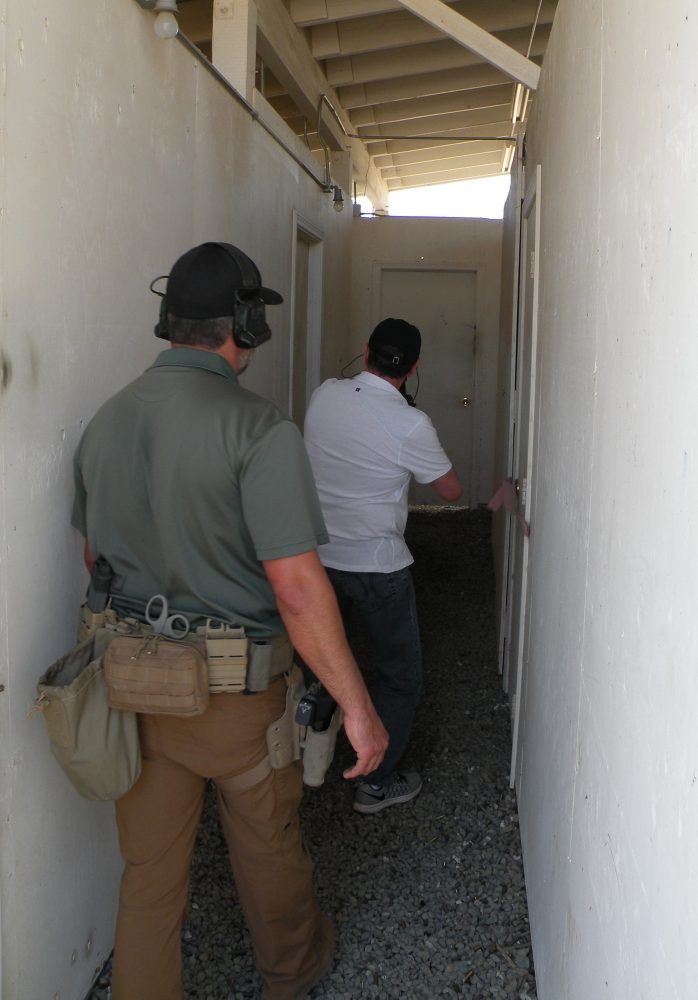
Live-Fire Room Clearing
The student has picked up an AR-15/M16 from a downed officer outside a building, and because innocents are being slaughtered inside, makes the decision to go inside and confront the terrorists.
The instructor follows behind and explains the situation as the student progresses. Students must gauge their actions based on the information they are given—door ajar, screaming inside, etc—and when they make entry to the various rooms, they are confronted with a selection of shoot/no shoot targets.
Since this was an unknown weapon, all students were upset that they didn’t immediately check their ammo supply upon picking up the firearm, but those who felt it important to pick up the full extra mag that was lying near the gun were happy to reload when they ran dry and the bolt locked back after two or three rounds.
Those who had not were out of luck, but learned a lesson.
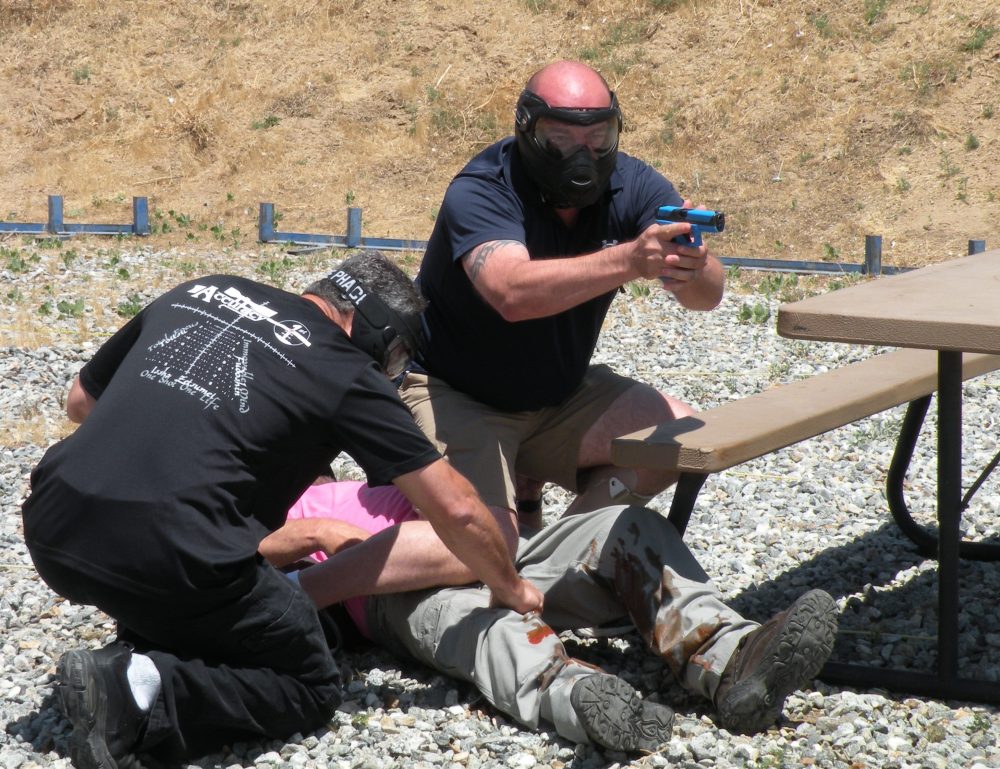
Carjacked
Since the class is held during the day, the assailant is concealed on the back seat under a large pile of blankets and open sleeping bags, so the precept is that the student is moving a vehicle on-scene that is not theirs.
This is a necessary staging element to this scenario because folks know whether they have a large pile of blankets in their own back seat. However, if it were dark, the assailant could lie in wait out of sight on the floor of the back seat. The student is given a Simunitions loaded pistol and hustled into the car.
Two role-players stand out away and to the front of the car, placed there to draw the students’ attention and distract them from the rearview mirror or looking over their shoulder.
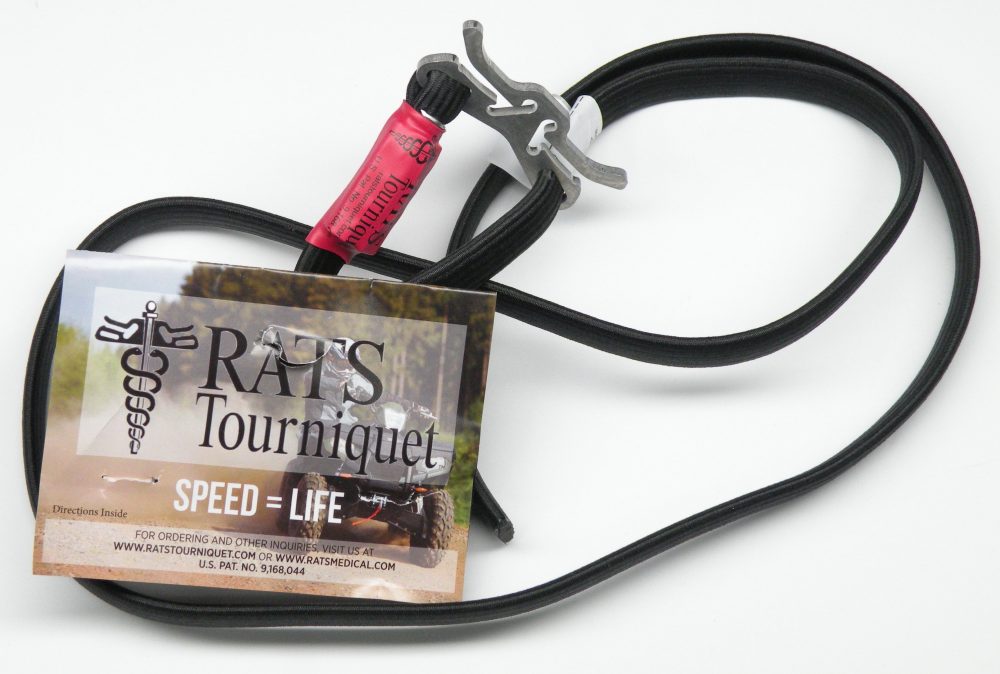
Interestingly enough, only one student examined the rather suspicious pile of blankets on the back seat and investigated far enough to ID the assailant under the pile.
And while forgivable due to the Simunitions load in the gun, every student had to be reminded that nearly any caliber of handgun will shoot through a car seat at point-blank range, which was the quickest and simplest way to dispatch the bad guy in this scenario.
Just trap the knife and let ‘im have it!
Here again, lessons were learned that won’t soon be forgotten.
Ambush in the Park
A fellow is sitting at a picnic table just like those found in parks all around the U.S. We are told the park is busy and people are all around. Two students approach and greet him as friends, then the assailant bursts on the scene with pistol in hand and fires on the group.
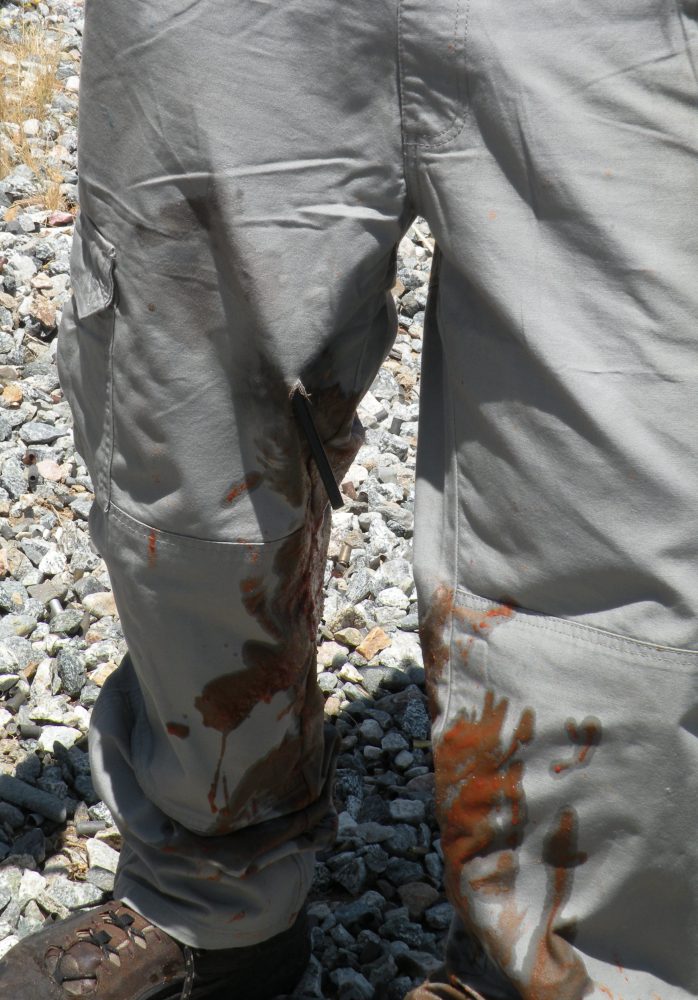
Students must react to this, and naturally some were quicker to do so than others. Only one student out of the entire class yelled to his partner (and supposed bystanders), “Call 911!”
As students try to deal with the blood spurting from the victim’s leg, the assailant reappears and attacks again. If no one has done so already, students must decide to retrieve the dropped gun and fight back, retreat, or stay in place and continue to administer aid to the wounded man.
Various reactions here, with almost all students staying with the victim, and several students returning fire on the reappearing assailant.
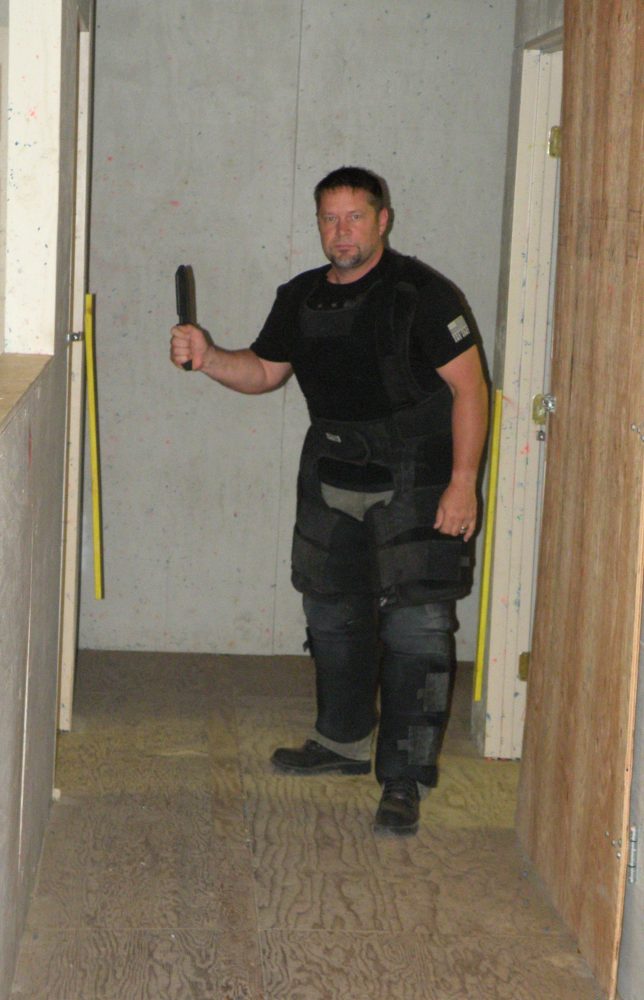
Edged Weapon Attack
The student is given a training pistol loaded with Simunitions and told that loud noises are emanating from a nearby building along with screams for help. Upon entering the building, the student turns a corner through a door and into a hallway and is confronted with a knife-wielding assailant.
It’s a big knife and an aggressive guy, but he complies with orders to “drop the knife” and then retreats. But his retreat is only temporary, and he once again advances upon the student, but without picking up the knife. While most students immediately issued commands to “drop the knife,” a couple simply opened fire on the assailant when he moved toward them.
Citing the “21-foot rule” and pointing out that the distance between them was shorter than that, they were confident in their decision to shoot. While it was possible to do so, no students backed out of the door to the open space between themselves and the aggressor while covering him with the pistol, before or after he dropped the knife.
Every student eventually fired upon the assailant as he advanced on them the second time, saying he could have had another knife. It had to be pointed out that if he didn’t, the students had just shot an unarmed man. Here, as in the other scenarios, the message was to Stop, Observe, React, and Act Properly.
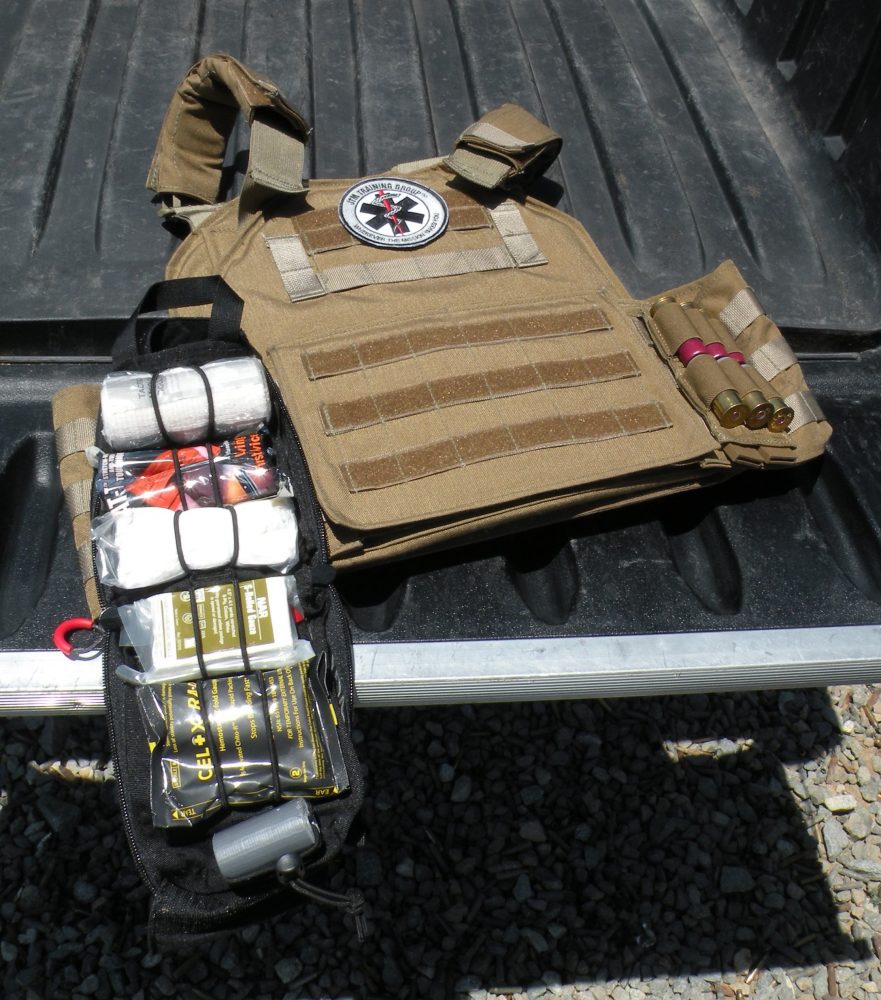
SOURCES
FIREARMS TRAINING ASSOCIATES
(877) 554-GUNS
www.ftatv.com
PSC-MED PRODUCTS
(951) 396-5757
ww.psc-med.com
TECHNON
(954) 364-7516
www.technonllc.com

